- Jenova Guide - May 8, 2022
- Safer Sephiroth Guide - May 8, 2022
- Kefka Guide - April 27, 2022
Final Fantasy XIII is almost 13 years old already. Released on December 17, 2009, for the PS3 and XBOX 360, Final Fantasy XIII tried to reinvent the classic active-time battle system. It is the first Final Fantasy game developed for the PS3 and the XBOX 360.
With a development period spanning over five years (which began in 2004), you would think that this game would be a masterpiece, right? Well, you’re going to be disappointed.
The main plot of Final Fantasy XIII revolves around the central character, Lightning, as you seek to save her sister. Many of the criticisms thrown at Final Fantasy XIII mainly revolve around three things.
- The Plot
- The Linearity of the Game
- The Combat System
I think that many criticisms come from hardcore fans of Final Fantasy. While I certainly agree that it’s not the best Final Fantasy game out there, it is not that bad as fans make it out to be.
Before we delve into those criticisms, let’s backtrack a bit and look at the plot as a whole, the characters and the combat system.
Bottom Line Up Front: Final Fantasy XIII is a very controversial game centred around the chaotic world of Gran Pulse. Although Final Fantasy XIII garnered mainly negative reviews from many of the series’ long time fans, I’d beg to differ and would recommend you to give this game a try.
The Vast and Complicated History of Gran Pulse
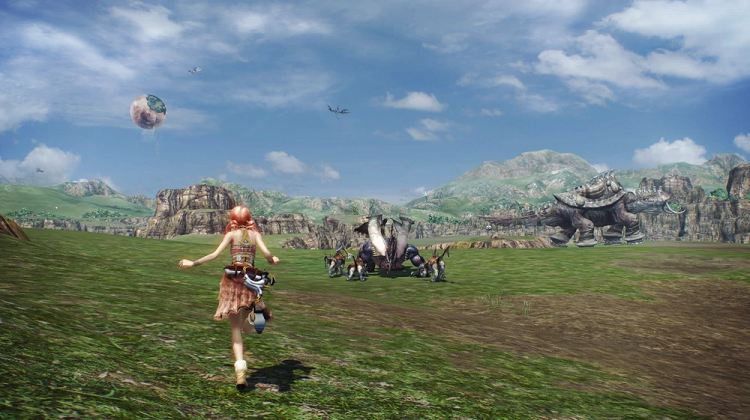
Final Fantasy XIII takes its story in the world of Gran Pulse, which houses an artificial sphere called Cocoon, floating above Gran Pulse’s surface. A theocratic government, Sanctum, rules over Cocoon. A fal’Cie accompanies the Sanctum, which is a demigod in the form of mechanical beings.
Think of fal’Cies as the givers of life, water and power to humans living in Gran Pulse and Cocoon. Each of the fal’Cie has the ability to mark humans and eventually turn those marked humans into servants. These marked humans or servants are called l’Cie.
fal’Cie provides specific missions to the l’Cie, called Focus; an l’Cie needs to complete their Focus in a particular amount of time, or else they will turn into monsters called Cie’th. fal’Cie gives their l’Cies the power of crystal in return for their services.
The War of Transgression took place several hundred years before the current timeline of Final Fantasy XIII. It was a war between Gran Pulse and Cocoon wherein the Gran Pulse l’Cies’ sole Focus is attacking and opening a hole in Cocoon.
Eventually, the l’Cie from Pulse succeeded and turned into crystals. The current Sanctum utilizes this war to instil fear in the citizens of Cocoon and keep their power as the governing figure of Cocoon.
The Sanctum has two military branches; the Guardian Corps, which like our typical day police officers, keeps every citizen of Cocoon in check. The second branch is the Public Security and Intelligence Command, also known as PSICOM, which serves as their military that deals with any threats coming from Gran Pulse.
The Main Characters
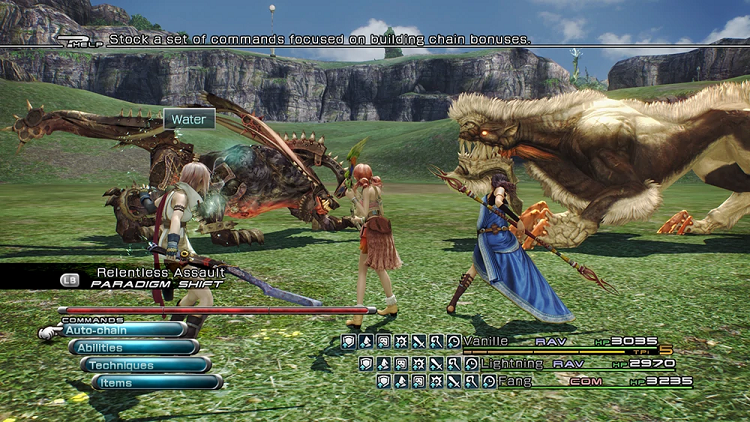
Lightning
Lightning, also known as Claire Farron, is Final Fantasy XIII’s main protagonist and heroine. She was already an orphan by the age of 15, and the responsibility to raise her sister Serah fell upon her shoulders. She changed her name to Lightning to cope with the loss of her parents.
Afterwards, Lightning joined the Guardian Corps, in which she quickly gained ranks. Unfortunately, due to Lightning being busy because of her position in the Guardian Corps, she couldn’t give time to Serah.
Snow Villiers
Snow Villiers is another playable character in Final Fantasy XIII. Raised as an orphan in a Sanctum facility, he eventually found and led NORA. Nora is a group that protects the living beings in Bodhum.
Fast-forward, Snow became Serah’s fiance. After meeting Snow, Lightning wasn’t too impressed and never approved of NORA’s missions. A few days later, Serah revealed to Snow that she became an l’Cie.
Snow planned on taking Serah to see the fal’Cie who gave her the mark. Snow’s idea was to reveal Serah’s Focus and convince Lightning, but unfortunately, the PSICOM chased and attacked Snow and Serah.
Oerba Dia Vanille
Vanille, a resident of Oerba from Gran Pulse, was part of the War of Transgression. She and her friend Fang lost their family to Cocoon’s l’Cie and fal’Cie.
Vanille and Fang became an l’Cie, and they became one the owners of the power of Ragnarok. Destroying Cocoon was their main Focus until the Goddess Etro stepped in and transformed Fang and Vanille into crystals before they could destroy Cocoon. They were able to leave a hole into the shell of Cocoon.
After several centuries, they woke up from their crystal form. Fang had a memory lapse about their past while Vanille played along and pretended that she had lost her memories as well.
Sazh Katzroy
Sazh Kastroy is a father to Dajh Katzroy, an l’Cie from Cocoon. Dajh accidentally wandered around into the energy plant and came face to face with a fal’Cie named Kujata. After seeing his son, Sazh rushed into the aid of Dajh but unfortunately, he already bore the mark of an l’Cie.
It was later then revealed that the fal’Cie came from Gran Pulse. Nabaat discovered that Dajh obtained the ability to know the presence of beings from Gran Pulse, but his main Focus is unknown.
Knowing that Dajh will eventually become a Cie’th due to PSICOM’s strict security, Sazh made up his mind to save Dajh by destroying the Pulse fal’Cie.
Hope Estheim
Hope Estheim is a 14-year-old playable character in Final Fantasy XIII. He and his mother Nora were on a short vacation trip to Bodhum when they were both caught in the Purge. They eventually met Vanille during this turn of events.
The PSICOM escorted them to the Purge train, and eventually, Lightning and Sazh hijacked the train. NORA, led by Snow, rescued the people sentenced for purging, including Vanille, Hope and his mother.
Oerba Yun Fang
Oerba Yun Fang, directly translating to Fang of the Yun clan, from the Village of Oerba, is a childhood friend of Vanille. Much like Vanille, she and Vanille share the same backstory. However, due to Vanille’s fear of owning part of The Ragnarok, Fang solely took the responsibility and became Ragnarok alone.
After being crystallized by Etro, Fang had her memories erased, but Vanille had hers intact. To spare Fang the guilt of her past actions, Vanille chose to keep it a secret.
The Main Plot of FFXIII
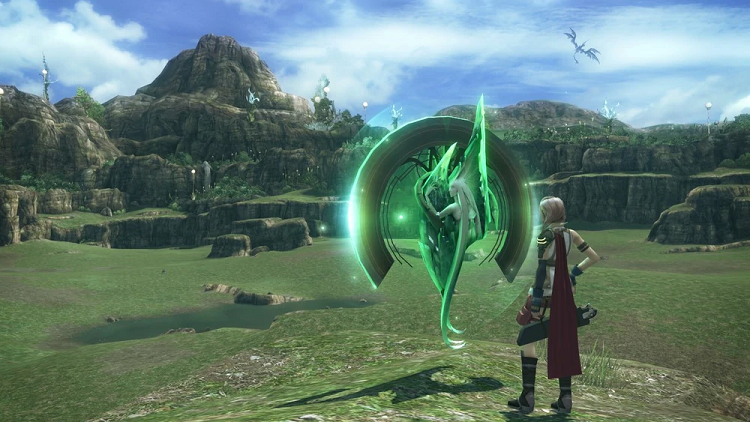
After Serah became an l’Cie by a fal’Cie from Gran Pulse, Lightning went rogue from her position in the Guardian Corps military due to the Sanctum treating Serah as an enemy of their nation.
The Sanctum authorized the Purge of citizens who may have come into contact with the fal’Cie. Aligned by faith, Lightning met with Sazh to find Serah. Meanwhile, Snow, the leader of the NORA, sets out to rescue Serah as well as other civilians caught in the Purge.
Snow met Hope and Vanille during their rescue, who both were part of the Purge. During the PSICOM’s attack, Hope’s mom died before his very eyes, leading to a sense of conviction as Snow couldn’t save her.
Lightning, Sazh, Snow, Hope and Vanille eventually rendezvous at Serah’s location. Serah told them that they needed to save Cocoon. Seemingly enough, telling Lightning and the crew to save Cocoon was Serah’s Focus. Serah turned into a crystal, leaving a crystal in Snow’s hand.
With tensions rising between the crew, they all agreed to confront the fal’Cie within in hopes of restoring Serah. However, the Gran Pulse fal’Cie, Anima grabbed hold of them and branded them as its l’Cie. They all shared the same fragmented vision of their Focus which they concluded as they needed to kill Ragnarok to save Cocoon.
After PSICOM showed up to detain them, the group instantly disposed of them with their newly obtained power as an l’Cie.
Armed with the same Focus, they march forward to continue their adventure.
Mechanics and The Combat System
Command Synergy Battle System
At the time, Square Enix thought to reinvent the series’ battle system by introducing the Command Synergy Battle System. Designed by Toshiro Tsuchida, we could compare this to an early prototype of Final Fantasy VII: Remake’s ATB battle system.
Each action corresponds to a specific consumption level of the ATB gauge. A great example of this would be a normal attack would consume one level of the ATB gauge while a more powerful spell consumes two to three levels of the ATB gauge.
Command Synergy Battle system introduces the stagger mechanic of monsters. Continually attacking a single enemy will make them stagger, and as a reward, any attacks on a staggered enemy will cause damage to increase exponentially. Now that’s a lot of damage!
This battle system also excludes the much-fabled MP system present in other Final Fantasy games, meaning you’d have to choose your attacks wisely and strategically. As a player, you will also not be able to fully control your other party members other than the party’s leader. Instead, you will be able to indirectly control your other party members by using a mechanic called Paradigm Shift.
Paradigm Shift
The Paradigm shift is a mechanic similar to the job system of older Final Fantasy games. The difference between the older job systems and this new mechanic is that you’ll be able to switch your member’s job during battle. There are six roles available in Final Fantasy XIII, and we will be explaining them one by one.
Commando
Commando has a few command abilities; what sets this role apart is that a Commando role deals heavy damage, especially on a staggered enemy. Another great perk of having a commando on the field is that attacks from commando slow the chain gauge down whenever an enemy is staggered.
Commandos also have the ability to launch staggered enemies, making them even more vulnerable to chain attacks.
Ravager
A ravager specializes in building up the chain gauge or the stagger gauge of an enemy. The closest job to a Ravager is the classic Black Mage found in most Final Fantasy games, as they seem to enforce most of their attacks with elements.
Sentinel
As the name suggests, sentinels are the tank roles for your characters. Other than imposing high HP and enhanced defences, sentinels have the ability to counter-attack an enemy as well.
Saboteur
One of the best roles in the game is the saboteur; similar to the time mage on Final Fantasy XII, the saboteur focuses on debuffs and crippling the enemy offence.
Synergist
Synergist is the opposite of the role saboteur. While the saboteur mainly focuses on debuffs, the synergist, on the other hand, focuses on applying buffs to the party.
Buffs and debuffs play a massive role in Final Fantasy XIII, so better utilize the saboteur and the synergist role properly.
Medic
Based on the name itself, a medic’s role is to provide healing, status ailment removal and recovery of knocked out characters. Like the valuable white mage in previous Final Fantasy games, the medic role is essential to your party, especially when it comes to brutal boss fights.
Eidolons
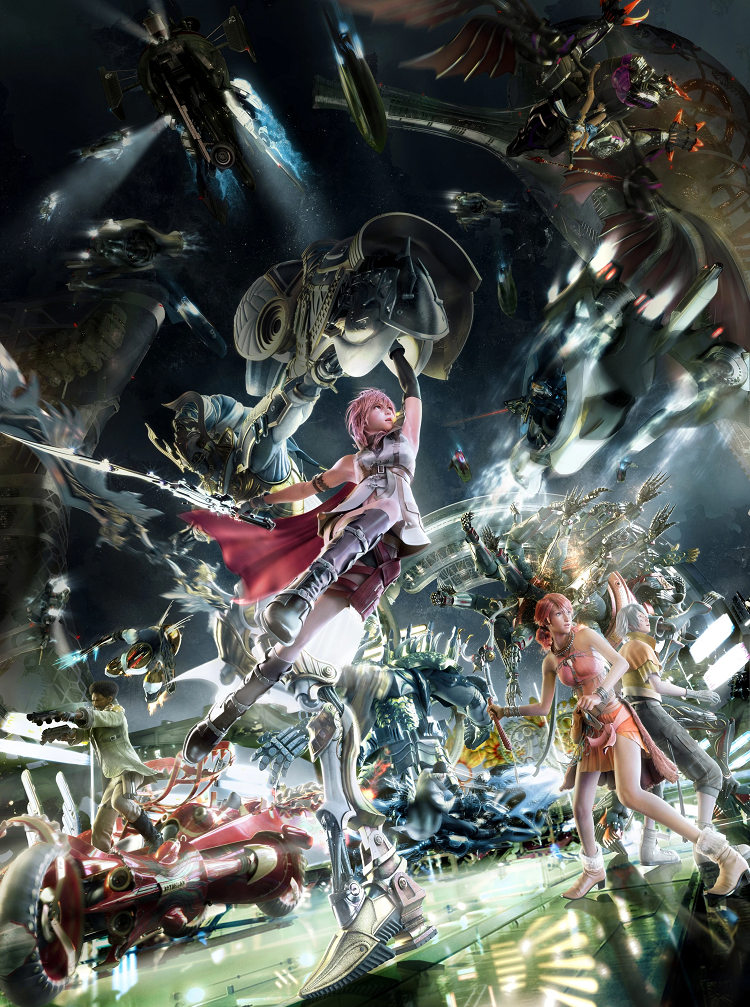
Most commonly known as summons in previous Final Fantasy games, Eidolons are strong beasts that you can summon to aid you in battle. Created by the goddess Etro, they serve as your companions throughout your journey in the world of Gran Pulse.
Although before you get to use them, you have to defeat them first. There are six eidolons; each playable character has their own Eidolon.
Shiva
The Eidolon of Ice, belonging to Snow. The twin sisters, Stiria and Nix, portray Shiva in this game. The twin sisters play around with the ice element, and they can transform into a motorcycle. Snow rides on the motorcycle with their signature move called Diamond Dust in their gestalt mode.
Odin
The Eidolon of Lightning Odin belongs to; you guessed it Lightning herself. Upon summoning into battle, Odin can give Lightning the ability to ride in Odin’s horse-like form and provides a boost in attack and damage with Odin’s signature attack, the Zantetsuken.
Brynhildr
The Eidolon of Fire, owned by Sazh, Brynhildr, has the ability to wield a bludgeon that can also shoot projectiles. She can also transform into a race car. When summoned into battle, she will utilize her bludgeon and perform various ranged attacks with her fire-elemental shots. Sazh can drive the car in her gestalt mode and use her signature attack, Muspell Flame.
Bahamut
The Eidolon of Non-Elemental belonging to Fang, Bahamut primarily uses heavily damaging non-elemental attacks. Using Bahamut increases the damage output potential due to its high attack and speed stats. Bahamut can transform into an airship during gestalt mode and has its signature move, the Megaflare.
Alexander
Alexander, the Eidolon that appears as a massive fortress, belongs as a summon to Hope. Alexander’s rendition in Final Fantasy XIII takes on a much more humanoid form with gigantic hands and legs as his form of offence.
Alexander also has the passive ability similar to taunt, which makes enemies focus on him, tanking most of the damage when summoned. In gestalt mode, Hope rides on Alexander’s shoulders and has the ability to use Alexander’s signature move, Divine Judgement.
Hecatoncheir
Vanille’s Eidolon Hecantocheir is an Earth-elemental Eidolon with multiple arms. During gestalt mode, Hecatoncheir can transform into a Magitek armor consisting of four machine gun turrets. During this form, Vanille can command Hecantocheir to unleash the signature move, Gaian Salvo.
A Cinematic Visual Experience
Square Enix sought Final Fantasy XIII as a cinematic visual experience, and surely enough, they did not disappoint. The world is gorgeous, and it is a great looking game for the time. The summoning animation and texture details are a step up from Final Fantasy XII.
The developers certainly captured the mood and the feel that the world of Gran Pulse sets out to be. A futuristic and scientific world amidst the chaos between two sides of the world at war.
With Gran Pulse being the nature-oriented side of the world and the Cocoon being the scientific and modern advancement that humans created, it shows that even the setting and contrast between two nations set the theme and tone for the game.
From the luscious greens of Gran Pulse to the highly advanced technologically powered world of Cocoon, you’d have no feeling of weary with the variety of locations in the game.
FFXIII: Criticized and Hated Since Release
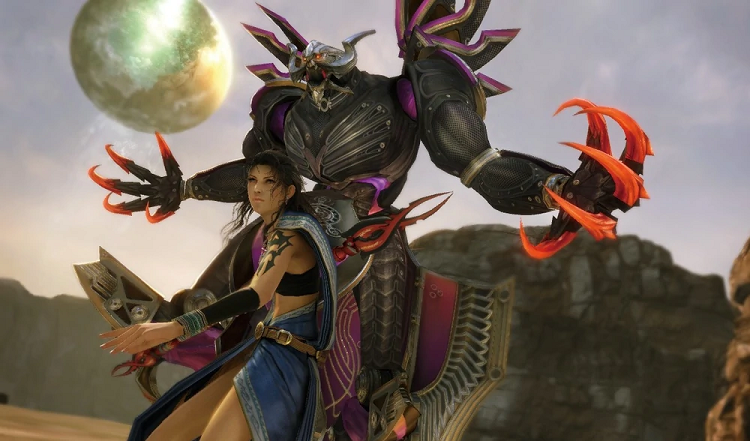
The Fragmented Story Telling
Upon booting up a new game for the first time, get ready for a bombardment of terminologies that sound similar. The terms didn’t quite stick from l’Cie, fal’Cie and even Cie’th; hence, people had difficulty grasping the game’s basic plot. It’s like the game is fighting itself in terms of story-telling.
A web novel released called Final Fantasy XIII: Episode Zero: Promise serves as the backstory of every main character in the game. Now, I think Square Enix did not consider that not all gamers are willing to read a novel to know the main characters more. It’s as if Square Enix is trying to tell stories in a fragmented way that doesn’t help the game.
I think this decision is one of the reasons why many players did not connect with the characters and even the plot.
The Linearity of the Game
Linearity is excellent at video games; it drives the game forward and gives you a sense of progression rather than aimlessly wandering around vast worlds with no character growth whatsoever.
However, Square Enix missed the mark on this game. Entirely half of the game consists of linear levels and a staggering amount of battle encounters. It’s a wrong decision from Square Enix, especially with the expectations of fans of the series coming from Final Fantasy XII, which features an open world with multiple side quests.
You might be asking yourself. Final Fantasy X is linear; why did people love that game and not this one? Final Fantasy X features blitzball, that’s why. But seriously speaking, Final Fantasy X’s inclusion of mini-games such as Blitzball helped alleviate some of the weariness that its linearity poses. Also, it introduced the Sphere grid, which is a fantastic talent system.
The Ambitious Battle System
I know what Square Enix is going for here; it feels as if they’re shooting for an action-RPG system much like the critically acclaimed Final Fantasy VII: Crisis Core, but they want to keep that strategic feel from Final Fantasy X.
What came out of that idea is a weird party system wherein you only control the party leader, and if the party leader dies, the game is over already. Accompany that with a linear progression and the game dumping battles after battles, I can see why people disliked this game.
The only redeeming factor that people seemed to love was the paradigm shift mechanic, which enables on-the-fly job switching for each character during battles. Other than that, most people saw the battle system as waiting for the ATB gauge to fill up and input a command for the party leader.
Frequently Asked Questions
Question: Is Final Fantasy XIII’s Story Good?
Answer: It is a good story in general; it’s not typical of other Final Fantasy games. It shows humanity, depth and overall an excellent character progression once you learn their background story. The story poses heavy utilization of manipulation and abusive government actions through the eyes of the main protagonist.
Question: How Long Does it Usually Take To Finish Final Fantasy XIII?
Answer: Usually, a general playthrough of 40 hours is enough to beat the game, but if you’re a completionist collecting every trophy for the game, it will set you about 80-100 hours or so. While the game is linear, there is still an open world to explore once you get through the half-point of the game, and that’s when you’ll be able to access side missions and optional boss fights.
Question: Why Was Final Fantasy Versus XIII Cancelled?
Answer: To clear things, Final Fantasy Versus XIII is different from the Final Fantasy XIII we know today. Final Fantasy Versus XIII’s trailer featured Noctis as the main protagonist.
Reports said that Final Fantasy XIII had the Crystal Tools Engine problems. Square Enix decided to pull developers from Versus XIII to meet the release date for Final Fantasy XIII. Later, Square Enix announced that Final Fantasy Versus XIII would now be known as Final Fantasy XV.
Final Thoughts on FFXIII: Is It Truly That Bad?
I think the game is interesting as a standalone game, but it would be a disgrace compared to other entries in the Final Fantasy series. I get that hardcore fans of the Final Fantasy series want to disown this game, but I see it differently.
For me, it was just a combination of poor execution of great ideas by Square Enix. I’ve watched old review videos and compared them with recent ones; many people now seem to adore this game more than when it was first released.
In my opinion, when FFXIII was first released, people often had high expectations that it would feature the same open-world environment and gameplay that FFXII had or even an excellent character progression tree like the Sphere Grid from FFX. Unfortunately, when Final Fantasy XIII did not meet these expectations, people blasted the game with criticism, resulting in people staying away.
Is Final Fantasy XIII truly that bad? Well, it is for a Final Fantasy game, but looking at it just as a standalone game, it isn’t. The world looks beautiful, and the textures and graphics still hold to this day; the music is an eargasmic experience, and the battle system is unique. Lastly, the overall plot is superb once you piece it together, including the web novels.
That’s it for me and my final thoughts on this Final Fantasy XIII game overview. If you’re interested in an excellent Final Fantasy game, check out these overviews:
